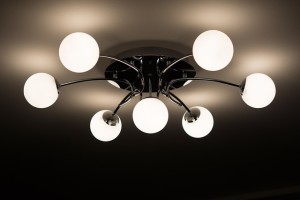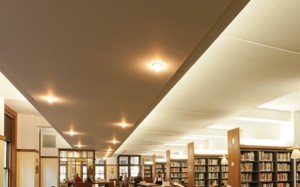 Apart from delicious food and great interiors, lighting is something every restaurant owner or manager should prioritize. Restaurant lighting plays a vital role in creating an atmosphere that makes your customers feel comfortable and at home. However, lighting should also be functional—you want people to see what they’re eating, after all.
Apart from delicious food and great interiors, lighting is something every restaurant owner or manager should prioritize. Restaurant lighting plays a vital role in creating an atmosphere that makes your customers feel comfortable and at home. However, lighting should also be functional—you want people to see what they’re eating, after all.
Below are a few things you should remember when designing your restaurant’s lighting system.
1. Adjust Your Lights Throughout the Day
It’s a good idea to have the ability to adjust your restaurant’s lighting depending on the time of day. This will open up a world of applications, which, in turn, lets you set the mood and ambiance of your dining space.
For example, for breakfast and brunch, customers are most likely reading the newspaper or enjoying their morning cup of coffee in the morning. You want to use as much natural light as possible during spring and summer, so go ahead and dim your lights. Come winter and autumn, however, you want to turn up the lights to make your restaurant inviting on those cold and gray days.
Meanwhile, during dinner service, turn the lights down low to create a relaxing and intimate mood.
2. Stick to Your Theme
Branding is vital to keeping your image and target audience. Although there are countless options for restaurant lighting, you’ll want to be consistent with your theme and brand.
For example, if your restaurant specializes in modern fusion cuisine, hanging a Victorian era-style chandelier in the middle of the dining floor may not jive with your image. A more appropriate style would be an industrial theme, with fixtures made of iron.
3. Use Lights that Make the Food Look Better
Remember, dining is a multisensory experience. People eat with their eyes just as much as they do with their mouths. So, it only makes sense to use that flatters the dishes you serve.
The trick is to choose light bulbs and that score high on the Color Rendering Index (CRI). This index is a quantitative measure of a light source’s ability to show colors compared to sunlight. This means the higher the bulb’s CRI rating, the better and sharper colors appear under its light. Reds, blues, and yellows become more vivid, making food look better.
4. Layer Your Lights
While getting beautiful light fixtures is important, you should always consider if your staff and customers are comfortable under those lights. It should neither be too bright or too dark. The right way to illuminate your space is to use different layers of light.
That means ambient lighting for general lighting, accent lights for additional lighting and decor, and task lights that needs to be placed in the reception, bar, counter, or any other space where staff will require light.
5. Light Different Areas Differently
Different spaces need different types of light. For example, tables need enough light so customers are able to read menus. The reception and waiting areas often need to be brighter so the staff and customers are able to communicate properly—this also gives the customers a welcoming atmosphere as they wait for a table.
Keep these lighting tips in might and create a wonderful space for your customers and staff in your Scottsdale restaurant.


 Apartment Lighting
Apartment Lighting Area Lighting
Area Lighting Automotive Lighting
Automotive Lighting Building Wall Pack Lighting
Building Wall Pack Lighting Canopy Lighting
Canopy Lighting High & Low Bay Lighting
High & Low Bay Lighting Industrial Lighting
Industrial Lighting Parking Lots & Garages
Parking Lots & Garages Pathway Lighting
Pathway Lighting Retail Lighting
Retail Lighting Stairwell Lighting
Stairwell Lighting























